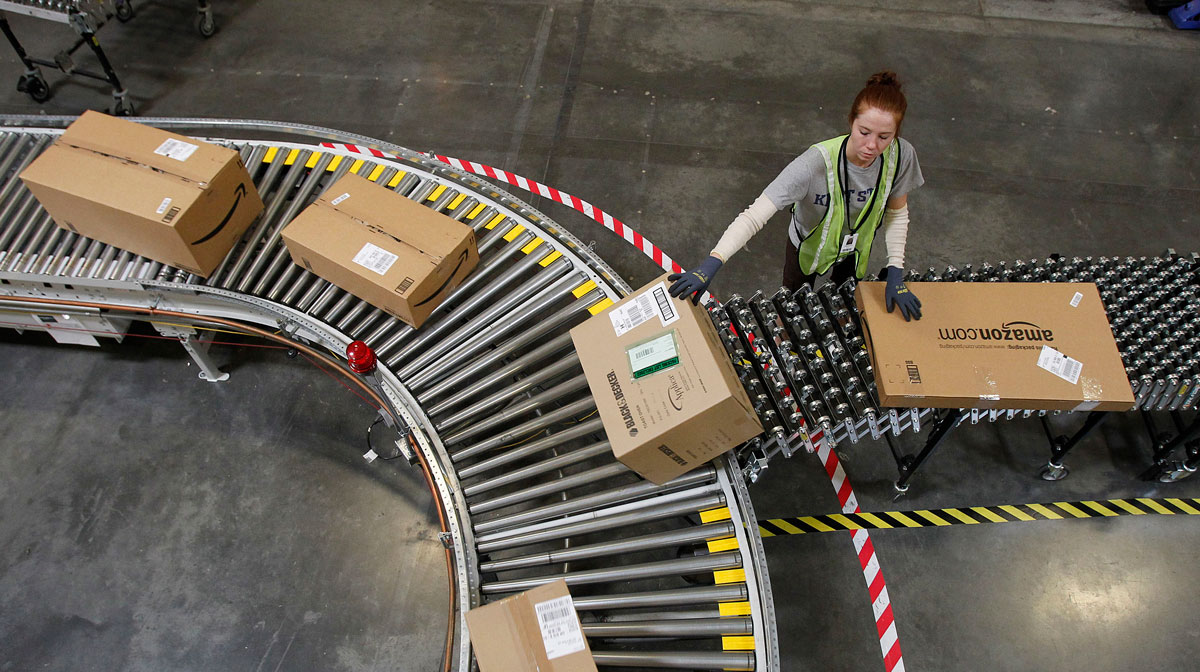Amazon’s system for tracking its warehouse workers can automatically fire them

A world where people are monitored and supervised by machines isn’t confined to the realms of sci-fi. It’s here now.
Tough conditions: There have been many reports over recent years about unpleasant conditions workers face at Amazon warehouses. Employees are under pressure to pack hundreds of boxes per hour, and face being fired if they aren’t fast enough.
What’s new: Documents obtained by The Verge show that it’s far more common for people to be fired due to lack of productivity than outsiders realize. Roughly 300 people were fired at a single facility between August 2017 and September 2018 for that reason. And crucially, the documents show that much of the firing process is automated.
The automation aspect: Amazon tracks every individual worker’s productivity, and automatically generates warnings or even terminations without any input from supervisors, the company said. Managers can override the process, but it didn’t say how regularly they do. Amazon says that the termination process can be appealed.
Wider implications: Uber drivers have complained of “management by algorithm.” This is not the first “fired by a computer” case but, as automation marches on, these stories are likely to become a lot more common.
Update: After publishing, an Amazon spokesperson sent us the following statement: "It is absolutely not true that employees are terminated through an automatic system. We would never dismiss an employee without first ensuring that they had received our fullest support, including dedicated coaching to help them improve and additional training. Since we’re a company that continues to grow, it’s our business objective to ensure long-term career development opportunities for our employees. Similar to many companies, we have performance expectations regardless of whether they are corporate or fulfillment center employees. We support people who do not perform to the levels expected of them with dedicated coaching to help them improve and be successful in their career at Amazon.”
This story first appeared in our daily newsletter, The Download. Sign up here to get your dose of the latest must-read news from the world of emerging tech.
Keep Reading
Most Popular
Large language models can do jaw-dropping things. But nobody knows exactly why.
And that's a problem. Figuring it out is one of the biggest scientific puzzles of our time and a crucial step towards controlling more powerful future models.
How scientists traced a mysterious covid case back to six toilets
When wastewater surveillance turns into a hunt for a single infected individual, the ethics get tricky.
The problem with plug-in hybrids? Their drivers.
Plug-in hybrids are often sold as a transition to EVs, but new data from Europe shows we’re still underestimating the emissions they produce.
Google DeepMind’s new generative model makes Super Mario–like games from scratch
Genie learns how to control games by watching hours and hours of video. It could help train next-gen robots too.
Stay connected
Get the latest updates from
MIT Technology Review
Discover special offers, top stories, upcoming events, and more.